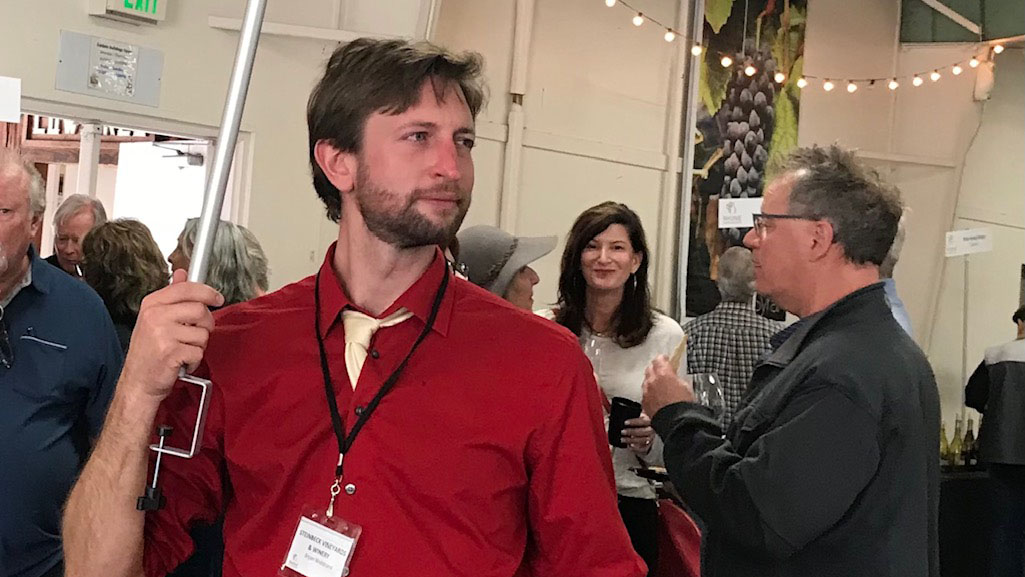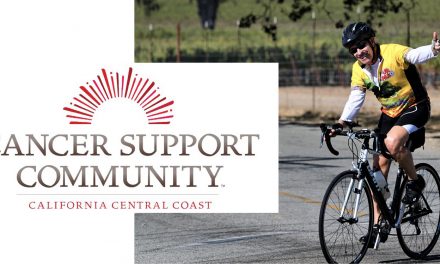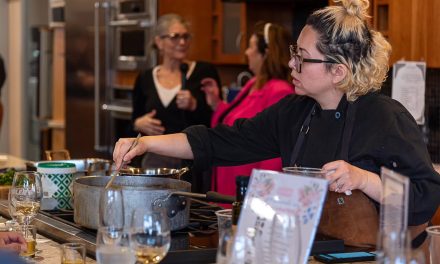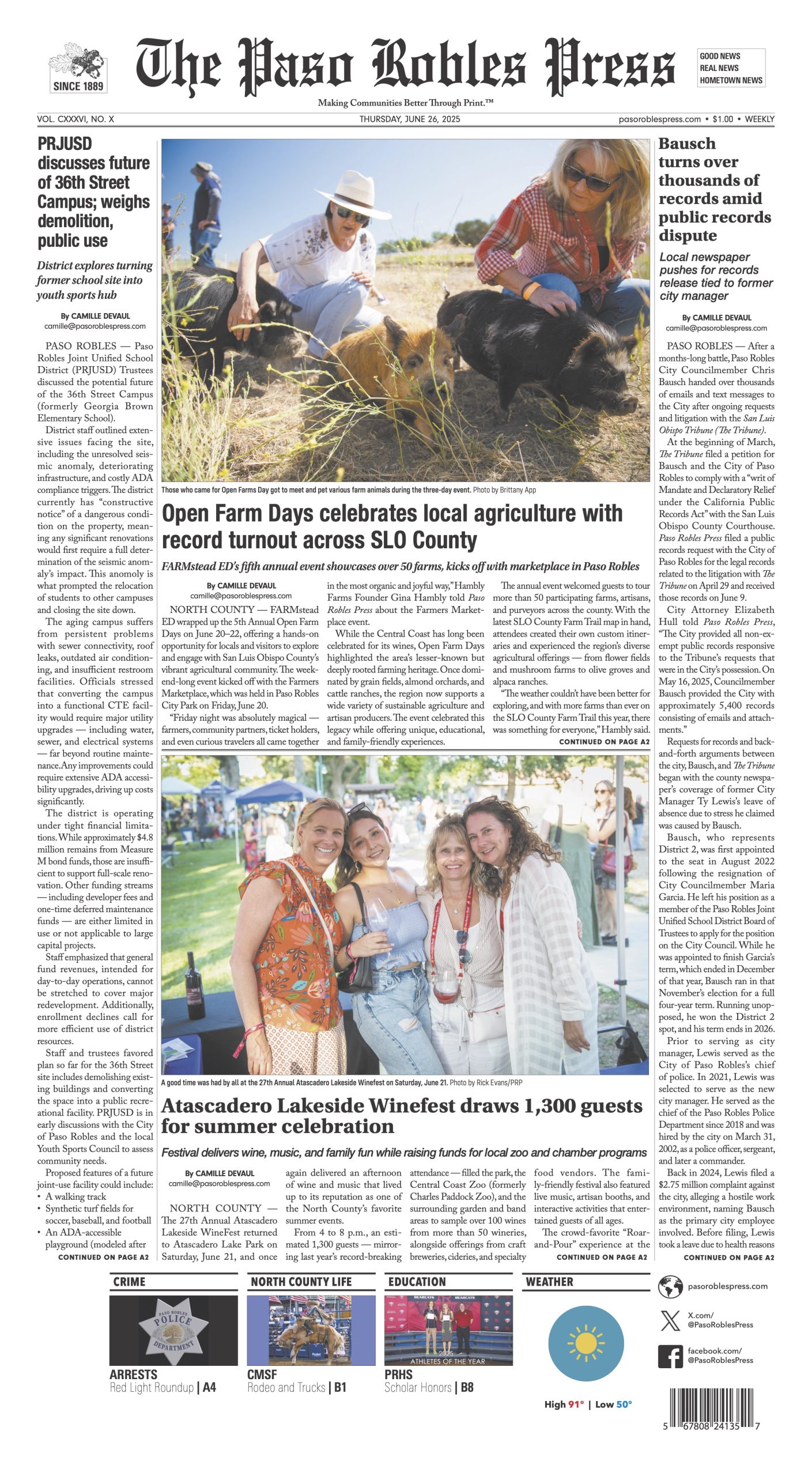Over 300 enthusiastic oenophiles gathered at the Paso Robles Event Center on February 22 at the Rhône Rangers Experience grand tasting and the silent auction.
“In 2020, we snuck [our annual event] in before everything shut down,” remarked Tony Quealy, president of the Paso Robles chapter. But the organization ran out of luck the following year when COVID forced a cancellation. Reemerging from the pandemic, this year’s tasting marked the 14th such gathering.
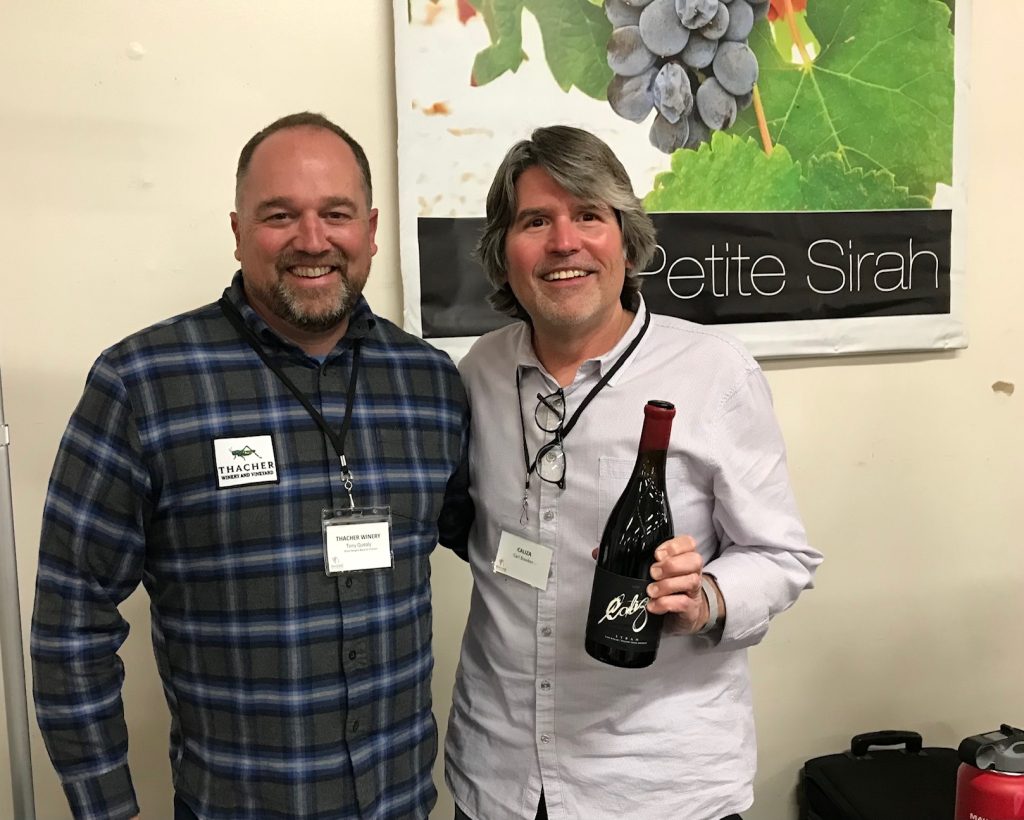
Photos by Mira Honeycutt
Hosted by the national Rhône Rangers organization, the event brought together 54 Rhône-style winemakers and producers from Napa, Sonoma, Santa Barbara and Paso Robles as well as Oregon and Washington State who collectively offered some 200 wines. The silent auction raised $14,000, net proceeds of which benefit the national Rhône Rangers organization, which focuses on the education, production and promotion of Rhône variety wine grapes grown in the US.
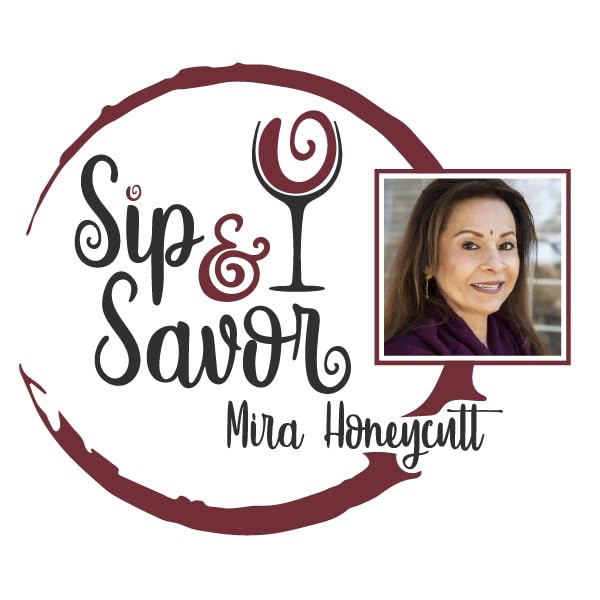
“Our national participation is growing,” Quealy commented. “The regional diversity we have here has been the best,” added Jason Haas, general manager of Tablas Creek Vineyard, on the participating wineries this year.
While there has been increased interest from winemakers in northern regions, the Central Coast continues to dominate, with Paso as the epicenter of America’s Rhône zone.
“This is who we are,” announced Ted Plemons of Cass Winery in his signature effervescent booming voice. “We are a mourvèdre house,” he emphasized. While Cass is also known for its full-bodied cabernet sauvignons, it’s one of many impressive Rhône houses locally with 28 acres planted to Rhône varieties.
Among the 200-plus wines (no, I couldn’t possibly get to even half of them), varietal syrah, grenache and mourvèdre took the lead (along with the popular GSM blends), followed by petite sirah with viognier, grenache blanc, roussanne and marsanne representing the whites. There were a few varieties such as carignan, cinsault and counoise that are mainly used in blends but are fast finding favor with winemakers as stand-alone varietal wines.
Hailed as the queen of carignan, Ranchero Cellars’ owner/winemaker Amy Butler is known for her seductive carignan, The Tethered Beast. I’ve been a longtime fan of this wine. Although there’s good availability of carignan in Paso, Butler prefers to source it from 40-year-old vineyards in Sonoma’s Dry Creek Valley.

“The best carignan comes from old vines,” she told me. “The wine expresses more when old because of concentration of fruit.” Butler’s technique includes fermenting partially on stems, which explains the wine’s herbal garrigue character.
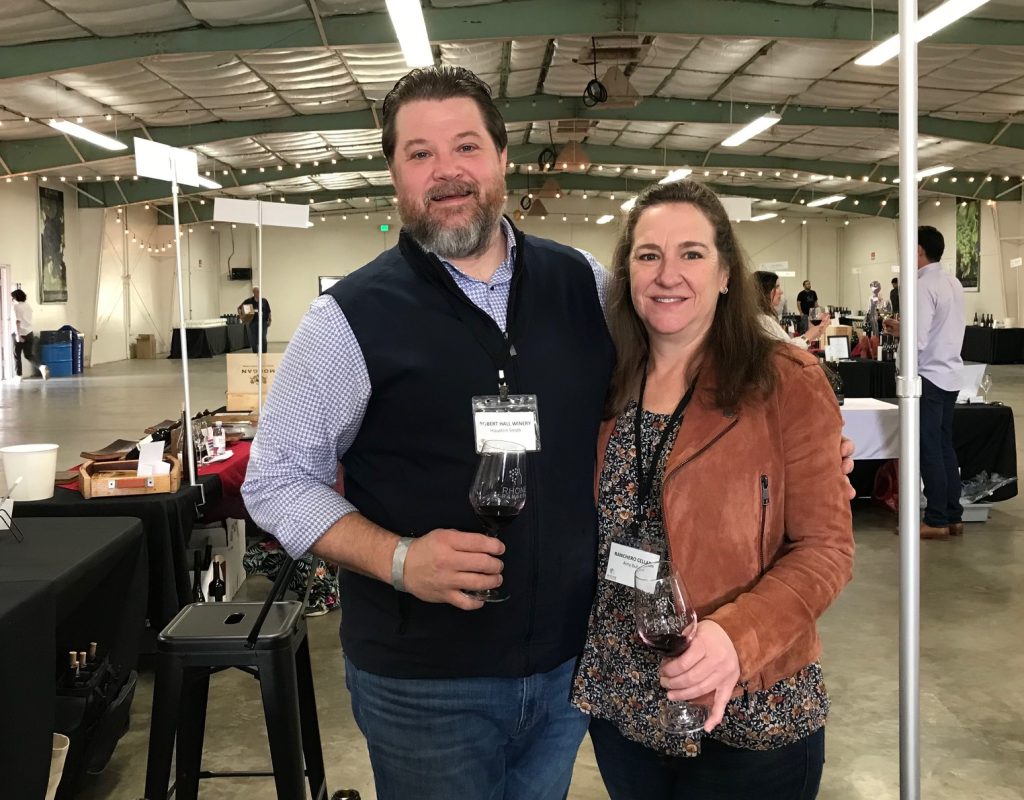
In contrast, Robert Hall Winery’s 2019 carignan, sourced from Paso’s hilly terrain of Paper Street vineyard, was lush with blackberries on the palate backed by dusty tannins.
At Dubost, winemaker Zachary Dubost poured the 2020 grenache blanc showing a brilliant acidity. “It’s from Glen Rose vineyard, the second oldest Rhône vineyard on the west side,” said matriarch Kate Dubost. She then offered the 2019 Jacob’s Ladder, a dark dense blend of syrah, petit verdot, malbec and grenache.
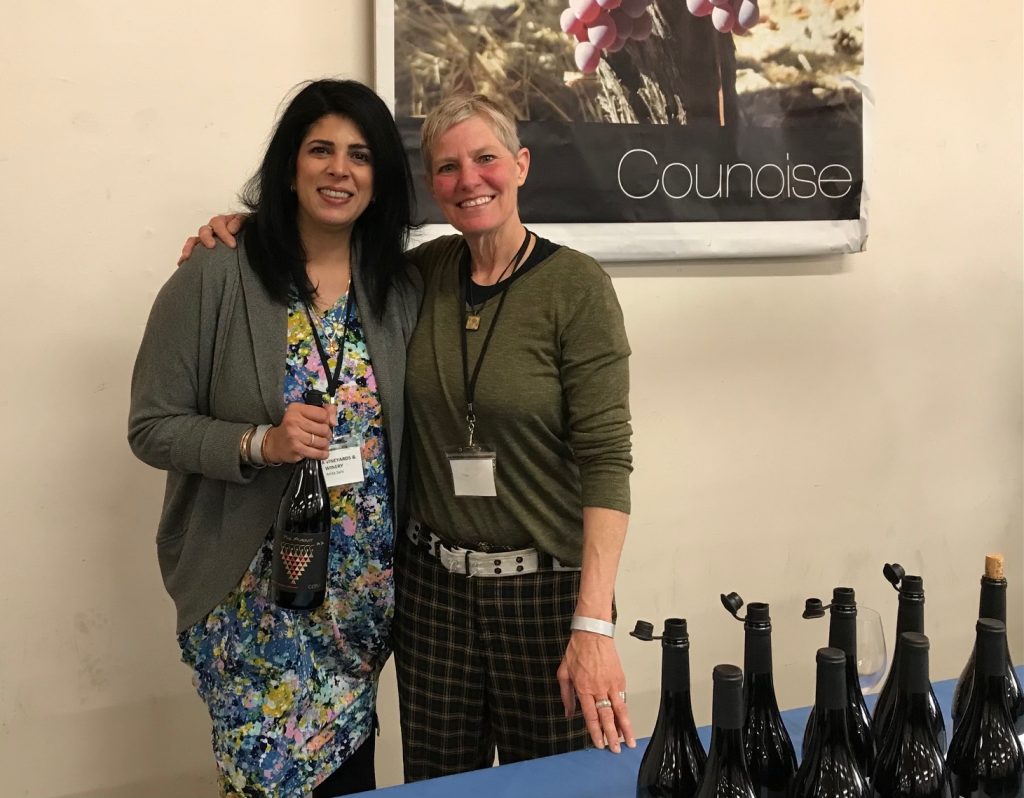
Copia Vineyards’ Anita Sahi and her husband Varinder have been piling up a number of high scores from wine critics for their Rhône-style wines. I savored a smoky 2018 syrah and a stellar 2019 grenache. Next table over, Cypher’s owner/winemaker Susan (SAM) Mahler, known for muscle-flexing Rhônes, offered 2017 vintages of a jammy fruit-layered petite sirah and a pumping-on-all-cylinders GSM enhanced with petite sirah and tannat.

At Kaleidos, owner/winemaker Steve Martell poured a peppery 2017 syrah and the 2018 Praying Mantis, a well structured GSM. Deno’s 2018 Paso Rouge, grenache-dominant with 28 percent of mourvédre, was lush with red berry fruits. A deep-hued 2019 Rolph expressed the yin and yang of the blend: the brightness of grenache backed by syrah’s dark fruit. “Syrah adds the weight,” commented owner/winemaker Denis Sharpe.
Among the whites, I was impressed by Caliza’s 2017 roussane, caressingly rich on the palate yet dry. It was barrel-aged for 30 months and bottle-aged for 12, noted owner/winemaker Carl Bowker.
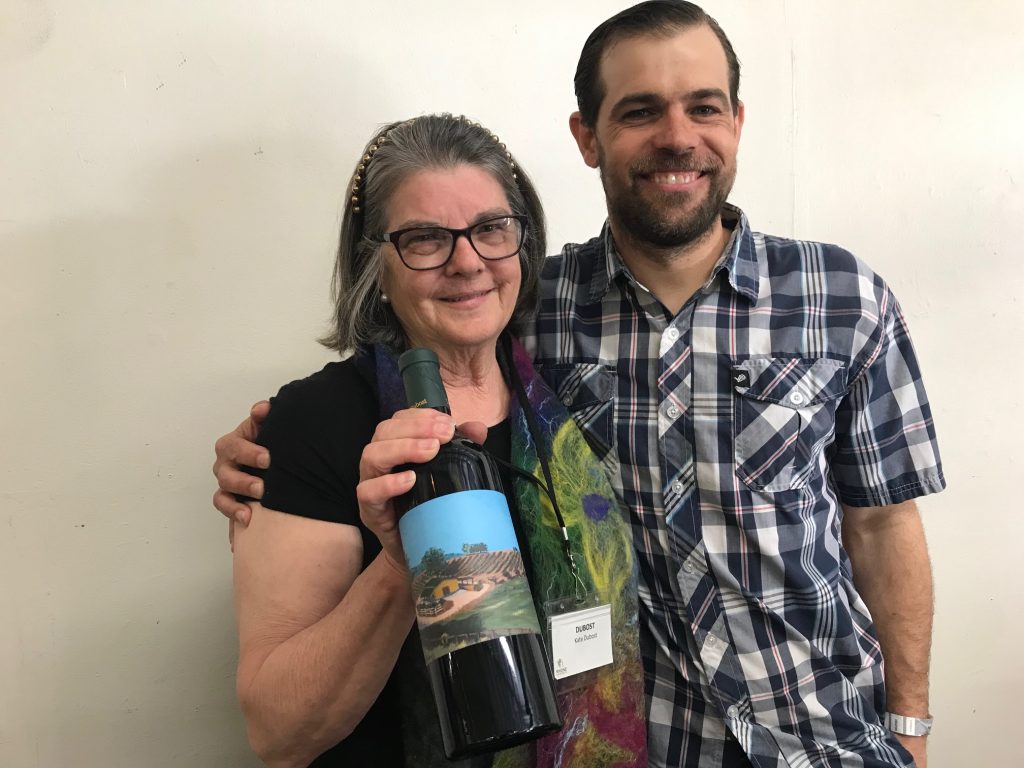
The name of the beguiling 12 O’Clock viognier at Alta Colina references the vine orientation. “At noon both sides of the vines get the same amount of sun,” explained Maggie Tillman of the wine that was aromatic with bracing acidity. From Napa Valley, Miner Family Winery’s 2019 viognier was another impressive white Rhône, rocking with tropical fruit and balanced acidity.
California’s Rhône plantings can be traced back to the late 1880s when Portuguese farmers planted mataro to produce jug wines. Later variety took the name mourvédre when California’s Rhône Rangers’ brigade sought out the grape in Contra Costa County and wineries such as Bonny Doon and Cline Family Cellars made it fashionable in the 1990s. Incidentally, it was at Cline that I first tasted mourvèdre back in 1996. So, it was a delight to revisit this variety with the 2020 Ancient Vines mourvédre, a carousel of plums and concentrated cherries.
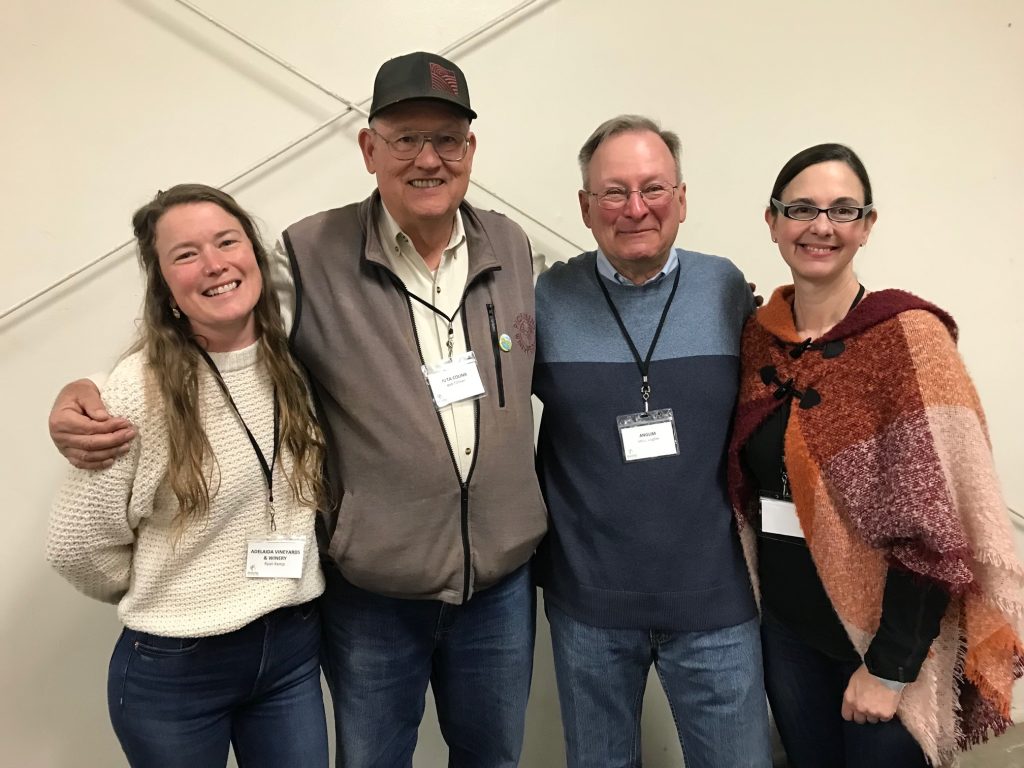
From Napa Valley, McKahn Family Cellars is among the few committed to Rhônes. “We make only Rhône wines and source all over,” said Brittany McKahn. She and her husband/winemaker Charles get their grenache from Amador County, syrah from Carneros and viognier from Russian River Valley in Sonoma County.
There was a good selection of Rosés from wineries such as Halter Ranch, J. Lohr, Steinbeck, Montemar and Tablas Creek.
Hailed as the world’s first winery to receive the Regenerative Organic Certification (ROC), Tablas Creek is now proud to release the 2021 Dianthus Rosé as its first wine bearing the ROC seal.
Coincidentally Troon Vineyard from southern Oregon’s Applegate Valley, the second winery in the world to get the ROC, also happened to be at the event pouring a floral, earthy 2019 Estate Syrah. “We’re up in the mountains, so you get a longer growing season; wines are lower in alcohol and high in acid,” commented winegrower Craig Camp of their 100-acre biodynamic ranch surrounded by Siskiyou Mountains.
It was a delight to taste Camins2Dreams lyrical syrahs crafted by Mireia Taribó who sources fruit from Sta. Rita Hills prized vineyards. “We do minimal intervention and use natural yeast only,” Taribó commented on the three nuanced syrahs expressive of black fruits and earthy flavors. Other Santa Barbara County wineries pouring outstanding syrahs included Qupe, Lindquist, Tercero, Jaffurs and Zaca Mesa.

